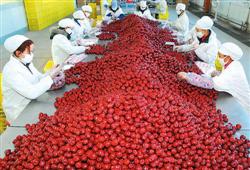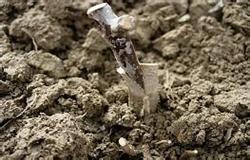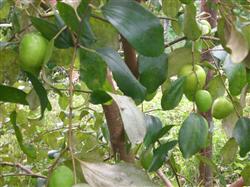Technology of scientific harvest, storage and preservation of fresh jujube

Fresh jujube has been widely cultivated in rural areas all over the country, and its fruit is bright red in appearance, crisp and sweet in taste, and rich in a variety of nutrients. The content of vitamin C in fresh jujube is 60-80 times that of apple and 30 times that of citrus. Scientific storage and preservation of oysters can greatly reduce the loss of growers and increase production and efficiency. We will ensure a long-term supply of fresh dates in the market and increase farmers' income. First, there are a wide variety of scientific harvest plants with different maturity periods and different storage tolerance. The practice shows that the fresh and dry varieties are more tolerant to storage than the fresh varieties, the small fruit varieties are more tolerant to storage than the big fruit varieties, the late-maturing varieties are more resistant to storage than the early-maturing varieties, and the fruits are less easy to crack than the easy-to-crack varieties. The fresh jujube should be harvested in the brittle ripe period; the fresh jujube used for storage is the best and the most resistant to storage when the fruit is half red; and the fresh jujube harvested in the mature period is suitable for drying. In southern China, most varieties mature in August, and some mature from October to November. The flowering period of the plant is long, and even the same plant will bear fruit sooner or later, so it should be harvested in batches according to maturity. On a sunny morning, the fruits are best picked after the dew is dry; the fruits of different varieties and ripening periods should be mined, opened, packed and stored separately; and the fruits of diseases and insect pests, rotten fruits, bruised fruits and substandard fruits should be removed as soon as possible after harvest. In order to improve the storage resistance of fresh jujube, 0.2% calcium chloride solution can be sprayed on the canopy half a month before harvest, or 150-fold high-fat membrane or 1000-fold topiramate sodium superphosphate solution can be sprayed to prevent jujube fruit from being infected with mold. Second, the storage and preservation of fresh oysters. Room temperature wet sand storage: choose a cool and dry room (can also use large boxes, baskets and other containers), first clean around and sprinkle with quicklime disinfection, then spread 3-5 cm thick wet fine river sand on the ground, put a layer of fresh dates (1 oyster thickness), and now spread a layer of wet sand, so that the pile is as high as 30-40 cm, and then keep the sand moist (you can regularly add a small amount of water. This method can store fruit for more than 30 days) 2. Spontaneous controlled atmosphere storage: this method is suitable for northern China. Make 70cm × 50cm plastic bags with 0.07mm thick polyethylene film (or use standard fresh-keeping plastic film bags). Each bag contains 15 kilograms of fresh jujube, fasten the mouth of the bag with a rope or heat-close the bag with an iron, and put it in a cool Arbor (fruit bags stand bag by bag on a shelf 60-70 cm high above the ground, leaving a ventilation passageway every 4-5 bags). Ventilation and heat dissipation should be strengthened at the initial stage of storage to make the temperature in the shed as low as possible to prevent high temperature fermentation of fresh jujube. After the temperature drops to 00C in winter, you don't have to worry about the cold, but you should pay attention to prevent rodent damage in storage. 3. Frozen storage: fresh jujube should be picked, selected, packaged and frozen stored in time. Before storage, put the fresh dates in plastic film bags, each bag 1-2 kg and seal. When the quantity is large, use wooden cases and so on to put large plastic film bags in the box, each box containing 20 kilograms of fruit. Store the fruit in a freezer about-150C after loading, and keep the storage temperature at 00C after the fruit is frozen. When the fruit comes out of the warehouse, soak it in cold water for 30 minutes to restore its original state and release its original flavor. This method can be stored for 10-12 months. This method is mostly used in Shandong, Hebei, * and other areas. 4. Low temperature storage: put 50% colored fresh jujube into a plastic bag with 2-3 small holes 3-4 cm in diameter on one side (0.5-1 kg each), and then store it in a cold environment of 0-10C and 60% relative air humidity. It should be noted that fresh dates should be soaked in 2% calcium chloride solution for 30 minutes before storage, then precooled at 7-80C for 1-2 days, and stored in storage when the temperature drops to 7-80C. This method can be stored for 2-3 months. 5. Small package sealed suction storage: choose a polyethylene film bag which is 0.7 mm thick and each bag can hold 5 kilograms of fruit. Each bag is required to have a silk air hole. After bagging, the fresh jujube is sealed and the air is extracted from the bag, and then stored in a cool low-temperature storage (storage temperature 1-20C, relative air humidity 80% Mel 90%). The fruit can be stored for 8-9 months by this method. Third, red jujube storage fresh jujube sun or drying products called red jujube. Stored dates should be moderately dry. Disease-free, no damage, neat size, ruddy color. 1. Southern storage method: red dates are stored in a dry, cool and sterilized warehouse, preferably in a 50C warehouse. Red dates are usually stored in cloth bags or gunny bags. Before the jujube comes out of the cold storage, it should be moved to a slightly higher temperature and gradually moved out of the storage. In order to prevent red dates from being repackaged because there are water droplets condensed, they should be cool and transported in new packaging after the condensed water droplets disappear. two。 Northern storage method: when palletizing in gunny bags, it should be 50-60 cm away from the wall, and a passageway should be left between the pallets and the pallets to facilitate ventilation and passing. During the rainy season, each bag of red dates should be covered with a gunny bag to increase the moistureproof effect. When the outside temperature is low and dry, you can open the vents in the warehouse to remove the air from the warehouse and replace it with dry air. When jujube is stored, if a few small piles of lime powder are placed in the warehouse, the humidity in the warehouse can be significantly reduced. 3. Family simple storage method, small quantity can be filled with altars, bowls, vats, plastic bags, etc., sealed and stored in a cool place. When the quantity is a little more, it should be stored with rice husk ash, and there is no pollution. The method is: choose a clean, dry, cool cement floor room, now clean around and sprinkle with lime powder, then spread 1 cm thick rice husk ash on the ground, and then spread a layer of red dates, so that a layer of rice husk ash and a layer of red jujube pile up to 30-40 cm. This method is moistureproof and sterilized and can be stored for 2-3 months.
- Prev

Grafting Propagation of Jujube
The main results are as follows: 1. In the cultivation and production of rootstocks, sour jujube seedlings are commonly used, which can be obtained by direct sowing and transportation from other places. Before sowing sour jujube, the nursery should select the sandy loam with fertile soil, then open the soil moisture to make the bed, fertilize and water, sow the seeds, mostly use strip sowing, sowing 10cm, ditch depth 3cm, and suppress after sowing. After sowing.
- Next

Cultivation techniques of Taiwan jujube
Taiwan green jujube is from India jujube after many years of improved breeding. It has large fruit (generally fruit weight 60~100 grams), fine core, crisp meat, sweet taste and high nutritional value; it bears fruit in the same year of planting, and can enter the high yield period in the second year. Taiwan green jujube thick and fast growth, strong adaptability to temperature, tolerance of 35 degrees high temperature and a 10 degrees...
Related
- Moge, come on! The staff of the peasant association in the producing area of cantaloupe were frightened when the crowd gathered.
- Causes and Solutions of low Fruit setting rate of Apple
- Symptoms and control measures of passion fruit virus disease
- Fruit growing lesson: how do apple orchards keep high yields?
- Can you build orchards in the mountains? What are the pros and cons?
- How to manage the coloring period of Crisson grape?
- This paper introduces the processing technology of two kinds of fig products.
- How much is a month for retired teachers in rural areas by 2020?
- How can strawberry planting increase sugar content? We should pay attention to management in many aspects.
- What are the cultivation techniques on how to improve the yield of golden fruit?

